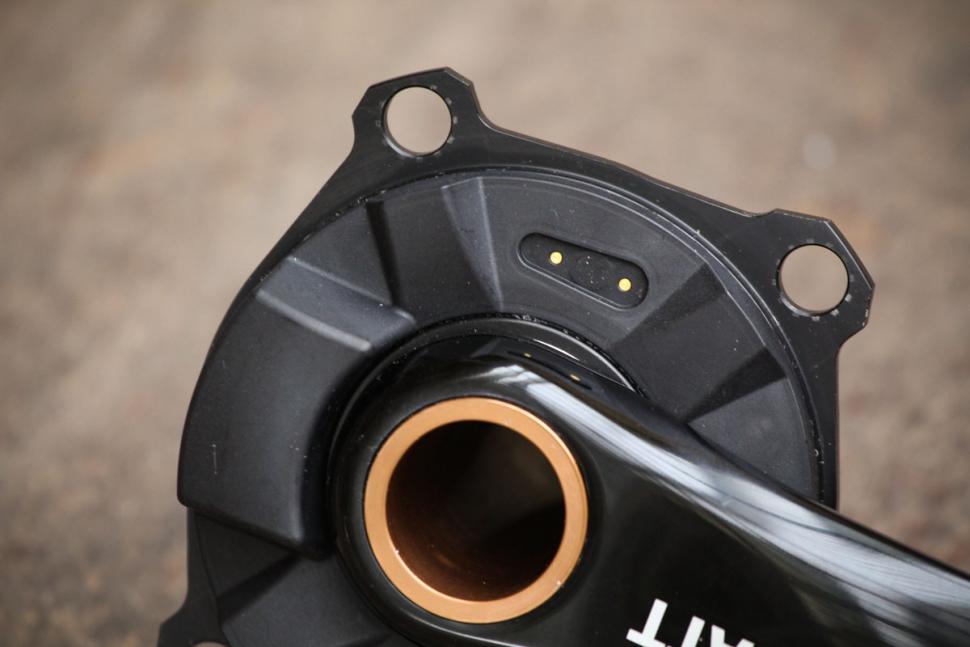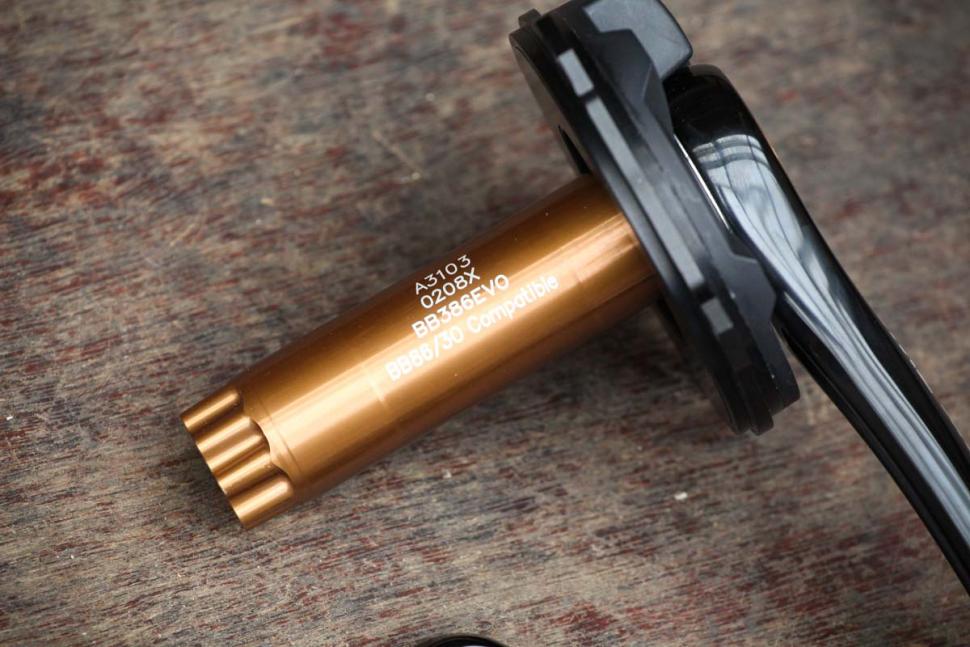- News
- Reviews
- Bikes
- Accessories
- Accessories - misc
- Computer mounts
- Bags
- Bar ends
- Bike bags & cases
- Bottle cages
- Bottles
- Cameras
- Car racks
- Child seats
- Computers
- Glasses
- GPS units
- Helmets
- Lights - front
- Lights - rear
- Lights - sets
- Locks
- Mirrors
- Mudguards
- Racks
- Pumps & CO2 inflators
- Puncture kits
- Reflectives
- Smart watches
- Stands and racks
- Trailers
- Clothing
- Components
- Bar tape & grips
- Bottom brackets
- Brake & gear cables
- Brake & STI levers
- Brake pads & spares
- Brakes
- Cassettes & freewheels
- Chains
- Chainsets & chainrings
- Derailleurs - front
- Derailleurs - rear
- Forks
- Gear levers & shifters
- Groupsets
- Handlebars & extensions
- Headsets
- Hubs
- Inner tubes
- Pedals
- Quick releases & skewers
- Saddles
- Seatposts
- Stems
- Wheels
- Tyres
- Health, fitness and nutrition
- Tools and workshop
- Miscellaneous
- Buyers Guides
- Features
- Forum
- Recommends
- Podcast
TECH NEWS
Team Zwatt's €499 Zpider power meter arrives for testing - first look
Two years ago Team Zwatt launched its power meter on Kickstarter with a bold aim to make owning a power meter more affordable.
It was a successful crowdfunding campaign, the Danish company raising £105,000. Production power meters started shipping a year ago, and now we’ve managed to get our hands on one for testing. We’re keen to see if a power meter without the big price tag can deliver performance to match more expensive power meters.
- How to choose a cycling power meter — a buyer's guide to your power training options
We’ve tested a fair few power meters here on road.cc, but the one thing they typically have in common is a high price tag, though the 4iiii, Stages and FSA Powerbox power meters show that prices are starting to come down.
Zwatt is cheaper than most. There are two versions, a left-only power meter similar to Stages, and a dual-side crank-based power meter called the Zpider. That's what we have here, in the cheaper of the two versions using a donor aluminium FSA Gossamer BB386EVO crankset (there's a fancier carbon option).
It costs €499, or £439 at today’s exchange rate, with the company currently selling its power meters direct through its website. Shipping costs about £14. That is a fair bit cheaper than most dual-sided power meters you can currently buy.
There is a slightly cheaper way to buy the power meter. For €392 (£345) plus what it calls a ‘maintenance fee’ for €4.28/month for 24 months, in exchange for a 30 minute monthly shared ride, you can get the power meter for a bit less money upfront and spread the rest of the payment over two years. It’s essentially a subscription service but one that will help Zwatt to continue to develop and improve the product with regular firmware updates, and you get to keep the power meter once you've paid it all off.
Let's take a closer look at the Zpider. As we've mentioned, it's a crank-based power meter with all the electronic gubbins housed inside the spider. It measures left and right leg power and also provides cadence data without the need for additional magnets stuck to the frame as it the case with some other power meters.
Accuracy is claimed to be +/-2% which is about the same as most other power meters, a few of the very expensive ones are 1% but at this price, it’s probably accurate enough for most people. The accuracy, and consistency of power capture is something we'll be paying particular attention to when testing it.
There's no replacing batteries to worry about, a rechargeable battery is integrated into the spider and is topped up via a magnetic port on the front. A small LED light indicates the battery runtime, claimed to be in excess of 240 hours. It’s compatible with ANT+ and Bluetooth head units and firmware updates can be applied via the company’s own app.
- Six reasons why you should use a power meter
The crank comes with an IP67 waterproof rating, which means it can be submerged in water up to a meter deep for half an hour, so should be sufficient to cope with typical British rainfall and road conditions.
Weighed on our scales, the drive side crank with the power meter is 495g and the non-drive side is 252g, for a combined weight of 747g.
That's weight without chainrings and bottom bracket, neither of which are included in the price so you’ll need to factor some into the cost. It’s 110BCD 4-bolt compatible rings for this model, Zwatt has supplied some Stronglight chainrings to get us up and running.
So that’s the first look taken care off, all we need to do now is fit it to a bike and log some miles to see how it performs. Watch out for a full review soon.
More info at https://teamzwatt.com/
David worked on the road.cc tech team from 2012-2020. Previously he was editor of Bikemagic.com and before that staff writer at RCUK. He's a seasoned cyclist of all disciplines, from road to mountain biking, touring to cyclo-cross, he only wishes he had time to ride them all. He's mildly competitive, though he'll never admit it, and is a frequent road racer but is too lazy to do really well. He currently resides in the Cotswolds, and you can now find him over on his own YouTube channel David Arthur - Just Ride Bikes.
Latest Comments
- Cycloid 1 sec ago
"Cyclists should not be allowed on the roads" ...
- Rendel Harris 2 sec ago
The bus incident is arguable, certainly. This more recent one I would say isn't, he's pulled into a completely empty oncoming traffic lane,...
- David9694 29 min 21 sec ago
An otherwise run-of-the-mill car hits barriers story given a bit of a boost by the advert attached to it: Jeremy Clarkson advert smashed by car at...
- Cugel 1 hour 8 min ago
Tht Tricross is the perfek example of an all-purpose, all surfaces, go anywhere bike. The design was so good I bought two of Tricross Comps, each...
- essexian 1 hour 51 min ago
From the piece: "One witness said he did not think Rashid would have had any time to react." At 41mph, perhaps not. At the posted 30mph, then very...
- Rome73 2 hours 10 min ago
The first time I went to Japan for work, the thing that made the biggest impression on me were the large, glass fronted vending machines on the...
- Rendel Harris 3 hours 1 min ago
That's not a bad idea, unfortunately what councillors like Mr Shepherd, council wardens and all too often police and magistrates as well regard as ...
- Born_peddling 7 hours 45 min ago
Athletes will always be that it's the technology through the years that's pushed time trials and race times. As a former downhill rider (for fun) I...
- wtjs 14 hours 41 min ago
car is costly but once the tax etc is paid (which you can't avoid - well, outside of Lancs...)...






Add new comment
3 comments
They need to jazz up those crank arms for starters
I joined their kickstarter for the single sided crank arm which did not fit my Cervelo S5 and was refused a refund. There was not enough thread for it to stay on, even an official Cervelo dealer could not get it to fit safely.
As it was a kickstarter project I had zero consumer rights so maybe buying direct is safer.
2017-12-28_12.03.05.jpg
Only €499, eh? Bargaintastic.